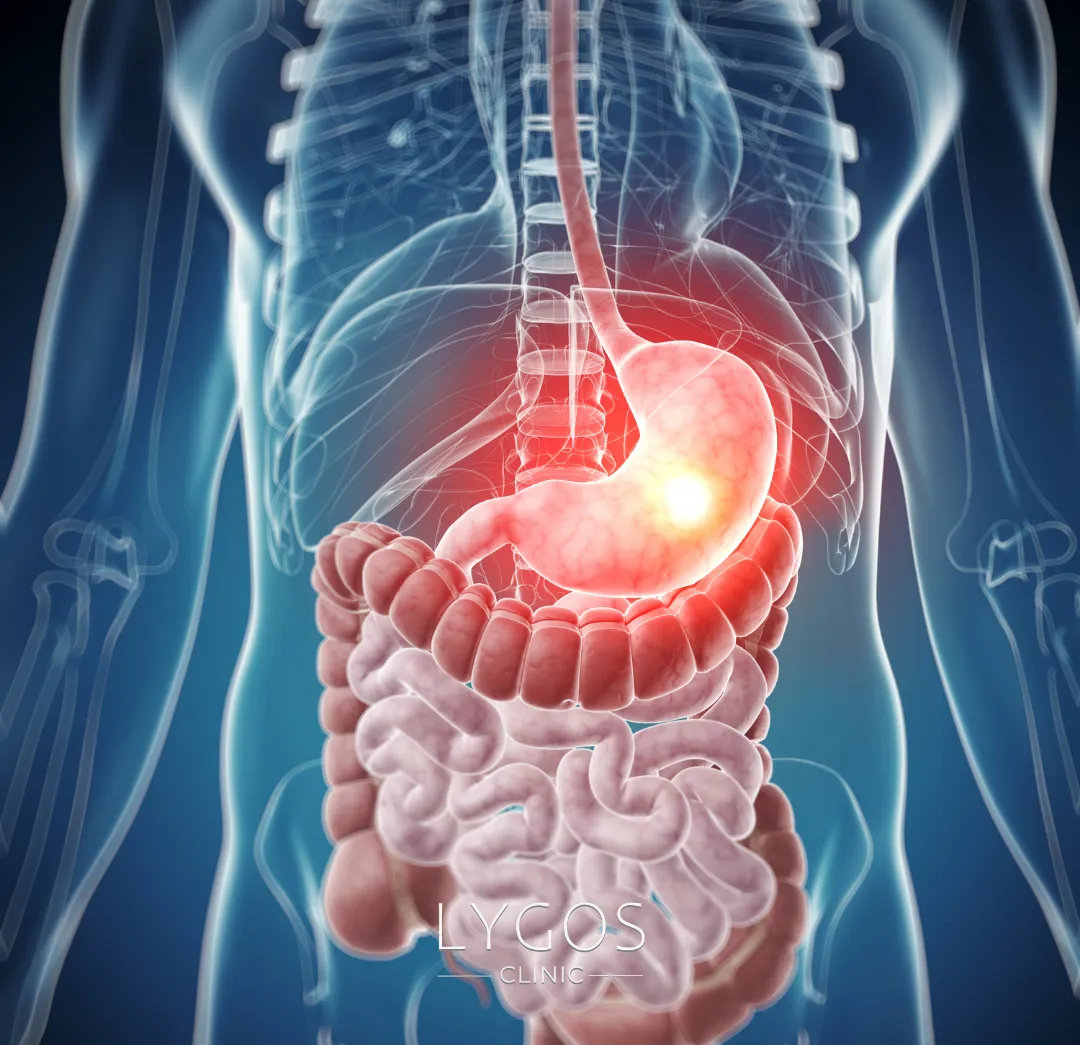Laparoscopic Sleeve Gastrectomy
Get Free Consultation
Chose Your Topic

What is Gastric Sleeve Gastrectomy?
Gastric sleeve gastrectomy, one of the most common surgical interventions today, is popularly known as “stomach reduction surgery”. In this procedure, the stomach is transformed into a thin and long tube like a banana. In this procedure, which is performed laparoscopically, that is, with the closed surgery method, approximately 80% of the stomach is cut out.
In this way, the stomach’s food intake is severely restricted. Gastric sleeve surgery also has the effect of reducing food absorption, albeit slightly. After this surgery, the appetite of patients decreases significantly. Insulin resistance decreases significantly even before weight loss occurs. This shows that sleeve gastrectomy has positive effects not only on weight loss but also on metabolic health.
What is Laparoscopic Obesity (Sleeve Gastrectomy)?
Sleeve gastrectomy, also known as vertical sleeve gastrectomy, is one of the methods of obesity surgery. It is usually performed laparoscopically, known as closed surgery. In laparoscopic obesity surgery, approximately 80% of the stomach is removed by inserting various surgical instruments through several small holes drilled into the abdomen. The remaining stomach is reshaped to be banana-shaped and similar in volume.
Sleeve gastrectomy limits the amount of food that can be consumed by reducing the size of the stomach. In addition, the hormonal changes that occur as a result of the reduced stomach volume support weight loss. These hormonal changes contribute significantly to the patient reaching and maintaining the ideal weight after surgery. This surgery not only physically shrinks the stomach, but also regulates metabolism, making long-term weight control easier.


How is Laparoscopic Obesity Surgery Done?
The main reason why laparoscopic surgical method is preferred in sleeve gastrectomy surgery is that a large incision is not made in the patient and the intestines are not tampered with too much. In this way, body functions return to normal in a very short time after the procedure. Most importantly, patients feel much less pain compared to open methods. Therefore, they need less pain medication.
During the operation, small holes are made in the abdomen of the patient and these holes leave almost no scars after the operation. During laparoscopic obesity surgery, several small holes are made in the patient’s abdomen and surgical instruments called trocars are inserted through these holes. A camera is inserted into one of these trocars and imaging is provided. Necessary surgical instruments are inserted into the other holes.
In order for the surgeon and the operating room team to work comfortably and obtain a clear image, the abdomen is first inflated by introducing carbon dioxide gas into the abdominal cavity. One of the advantages of this method is that the images seen by the doctor during the operation can be seen instantly by the operating room team.
This allows the process to proceed faster. The operation is performed under general anesthesia. Laparoscopic obesity surgery, which is a practical method, usually takes 1 - 1.5 hours. However, it should be kept in mind that this time may vary depending on the general condition of the patient, previous operations and complications that may be encountered during surgery.
What are the Side Effects of Laparoscopic Obesity Surgery?
As with any surgical intervention, laparoscopic obesity surgery also has certain side effects. So, what are the side effects of laparoscopic obesity surgery?
Excessive Bleeding: Excessive bleeding may occur during or after surgery.
Infection: There may be a risk of infection at the surgical site or throughout the body.
Anesthesia Related Side Effects: Adverse reactions may occur due to general anesthesia.
Blood Clots: A blood clot may form anywhere in the body.
Breathing Problems: Breathing problems may occur after surgery on the lungs or other organs.
Stomach Leakage: Leakage may occur in the operated stomach area.


What are the Advantages of Laparoscopic Obesity Surgery?
Laparoscopic bariatric surgery has more than one advantage. The biggest advantage of this method is the preservation of the natural structure of the digestive system and the transit traffic of food. In this way, vitamin and mineral deficiency is less common in patients.
In addition, since there is no by-pass in this method, food is allowed to move naturally. This eliminates the risk of Dumping syndrome, which can develop due to the sudden passage of sugary foods into the small intestine. In laparoscopic bariatric surgery, gastric reflux complaints are also less common. Laparoscopic bariatric surgery has the advantage of not requiring the insertion of a foreign body such as handcuffs.
What are the Harms of Laparoscopic Obesity Surgery?
Stomach reduction surgeries, although rare, can lead to life-threatening complications. These complications, such as bleeding or leakage after laparoscopic obesity surgery, which can be observed at a rate of 1 percent, can threaten the patient’s life when they occur. If these situations occur, it is critical for the surgical team to intervene immediately and make the necessary corrections.
Laparoscopic obesity surgery is one of the major surgical operations. As with other major surgical interventions, laparoscopic obesity surgery also has harms. These risks increase as the age and weight of the patient increases. However, when the contents of these surgeries are considered, the risk of death in operations is quite low. This risk is similar to that of gallbladder surgery.
According to scientific studies, the risk of appendicitis or gallbladder surgery is slightly higher in obese people than in lean people. However, this risk does not result in death. For example, while the early mortality rate in cardiovascular surgery is around 2 percent, this rate is 1 per thousand in stomach reduction surgeries.
Patients are thoroughly informed about the harms of laparoscopic obesity surgery by the doctors who perform this operation. Obesity surgeries are performed for health purposes, not for aesthetic purposes. The life expectancy of morbidly obese individuals is shortened by 10-15 years due to obesity-related risks. Therefore, obesity-related risks are much higher than the risks of laparoscopic obesity surgery.
In morbidly obese individuals who undergo stomach reduction surgery, health problems such as fatty liver, kidney diseases, diabetes and high blood pressure are significantly reduced. Therefore, stomach reduction surgery is both a low-risk intervention and an intervention that reduces the risks associated with other health problems.


Laparoscopic Obesity Surgery
Those who have laparoscopic obesity surgery live a more comfortable life by getting rid of the problems they experience. Especially preserving the natural structure of the digestive system prevents possible problems.
In this way, those who have laparoscopic obesity surgery continue to live a healthy life. Apart from the details above, the change experienced after surgery also affects those who have Laparoscopic obesity surgery psychologically. Patients who have a fit appearance play a more active role in their social lives as they improve both health and aesthetics.
Before and After Laparoscopic Obesity Surgery
The change that occurs before and after laparoscopic obesity surgery manifests itself in many ways. This procedure, which is one of the most ideal methods for the patient, generally does not cause health problems thanks to minimizing the loss of vitamins and minerals.
It also preserves the basic functions of the body. This allows the patient to continue his/her life smoothly before and after laparoscopic obesity surgery. People who have difficulty breathing and have a hard time with joint pain can get rid of their problems thanks to this method. The patient, who turns into a different person before and after laparoscopic obesity surgery, gains a fitter and healthier structure. In this way, it also improves psychologically.


Laparoscopic Obesity Treatment Costs
Laparoscopic obesity treatment costs vary according to the needs of the patient. If the patient’s problem is treated without surgery, the costs are determined accordingly. At the same time, the health problems the person is experiencing can also affect the costs. Laparoscopic obesity treatment prices may increase if the patient undergoes surgery. The cost of surgery performed by a specialist is higher. Therefore, it should be carefully decided which doctor will perform the procedure.
Laparoscopic obesity treatment costs also vary depending on the quality of the hospital. Costs are usually higher in a hospital with high quality and state-of-the-art equipment. However, it should not be forgotten that the success rate will also be reflected in the costs. Therefore, laparoscopic obesity treatment costs can increase with the right choice of hospital and doctor. If you want to get more detailed information on the subject, you can contact Lygos Clinic’s expert team.
Frequently Asked Questions About Gastric Bypass Revision Surgery
BLOG

Is Breathing Through the Mouth Harmful?
Chose Your Topic Is Breathing Through the Mouth Harmful? Breathing is one of the most fundamental needs of life. However,

Does Rice Water Make Hair Grow? | Benefits of Rice Water
Chose Your Topic Does Rice Water Make Hair Grow? Natural methods in hair care have become quite popular in recent

Breast Lump | Types: Benign, Malign and Causes | LYGOS 2025
Breast Lump While cancer stands out as one of the most common health problems today, early diagnosis rates are also





